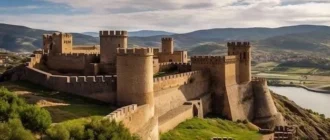Nestled on the coastal fringes of Mumbai, the Bandra Fort, also known as Castella de Aguada, stands as a silent sentinel overlooking the vast expanse of the Arabian Sea․ This 17th-century edifice, steeped in history and imbued with architectural grandeur, offers a captivating glimpse into Mumbais rich past, while simultaneously providing breathtaking panoramic views of the citys iconic skyline and the endless horizon beyond․ More than just a historical relic, the Bandra Fort has evolved into a cultural hub, a favored spot for locals and tourists alike, drawn to its unique blend of history, aesthetics, and tranquil ambiance․
A Legacy Etched in Stone: The History of Bandra Fort
The Bandra Forts genesis can be traced back to the year 1640, during the twilight years of Portuguese dominance in Mumbai․ Erected as a strategic watchtower, the fort served as a critical vantage point overlooking the Mahim Bay and the Arabian Sea, protecting the Portuguese settlement from potential maritime threats, particularly from the Maratha Navy which was gaining strength at the time․ The name “Castella de Aguada,” meaning “Fort of the Waterpoint” in Portuguese, speaks to the forts initial function as a freshwater replenishment point for passing ships․
The fort witnessed a shift in power in 1661 when the islands of Bombay were ceded to the British as part of the dowry of Catherine of Braganza to King Charles II of England․ However, the fort itself remained under Portuguese control until 1778, when it was finally captured by the British during the First Anglo-Maratha War․ Under British rule, the forts strategic importance diminished, and it was primarily used as a signal station․
Despite its turbulent past, the Bandra Fort has withstood the test of time․ Although parts of the structure bear the marks of time and conflict, conservation efforts have breathed new life into this historical marvel, preserving its inherent beauty and ensuring its legacy continues to inspire awe in generations to come․
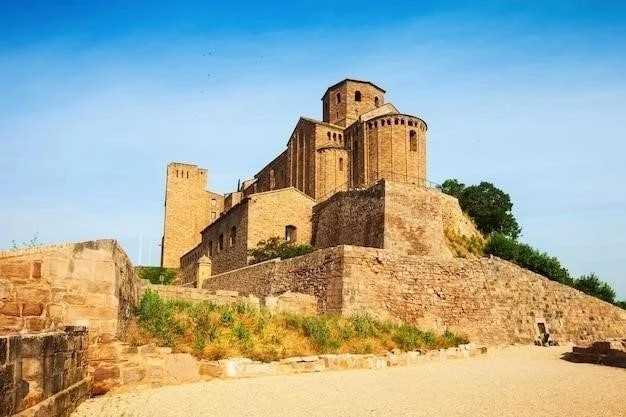
Architectural Splendor: A Fusion of Styles
The Bandra Fort stands as a testament to the architectural prowess of the Portuguese․ Constructed in the characteristic European style of the era, the fort seamlessly blends military functionality with aesthetic finesse․ Its imposing ramparts, crafted from sturdy laterite stone, rise from the rocky promontory, exuding an aura of impregnability․ Within the fort walls, the remnants of ancient cannons and military installations serve as poignant reminders of its defensive past․
One of the forts most striking features is its well-preserved arched gateway, leading to a sprawling courtyard that offers panoramic views of the Arabian Sea․ The remnants of a freshwater spring, once vital for supplying passing ships, can still be found within the forts confines, whispering tales of a bygone era․ Over the centuries, nature has woven its magic around the forts ramparts․ Lush green foliage, a vibrant tapestry of trees and flowering plants, now cloak the forts walls, softening its imposing façade and creating a sense of serenity that contrasts beautifully with its turbulent past․
A Cultural Oasis: Bandra Fort Today
Today, the Bandra Fort stands not just as a historical monument, but also as a vibrant cultural hub, a testament to the citys enduring spirit․ The forts picturesque setting, overlooking the vast expanse of the Arabian Sea, has made it a favored location for film shoots, photoshoots, and even intimate wedding ceremonies․ Its spacious courtyard often transforms into an open-air theater, hosting musical performances, plays, and cultural events that draw crowds from across the city․
For many Mumbaikars and visitors alike, the Bandra Fort offers a tranquil escape from the hustle and bustle of city life․ The gentle sea breeze, the rhythmic crashing of waves against the rocks below, and the panoramic views of the citys skyline, all combine to create an atmosphere of serenity that is both soothing and rejuvenating․ Couples stroll hand-in-hand along the forts ramparts, their silhouettes framed against the setting sun, while families enjoy leisurely picnics on the lawns, their laughter echoing through the courtyard․
Exploring Bandra Fort: A Journey Through Time
A visit to the Bandra Fort is a journey through time, a chance to immerse oneself in the rich tapestry of Mumbais history․ The fort is open to the public throughout the week, and admission is free․ Whether you are a history enthusiast, a photography aficionado, or simply seeking a few moments of tranquility amidst the citys chaos, the Bandra Fort promises a rewarding experience․ Here’s a guide to help you make the most of your visit:
Getting There:
- By Road: Bandra Fort is easily accessible by road․ Numerous BEST buses ply to and from Bandra, making it a convenient destination for those traveling by public transport․ Taxis and auto-rickshaws are also readily available from various points in the city․
- By Train: The nearest railway station is Bandra Terminus, which is well-connected to different parts of Mumbai․ From the station, the fort is a short taxi or auto-rickshaw ride away․
Best Time to Visit:
- October to March: The months from October to March, during the winter season, offer the most pleasant weather for visiting the Bandra Fort․ The days are sunny and warm, while the evenings are cool and breezy, perfect for exploring the forts ramparts and enjoying the scenic views․
- Monsoon Season: The monsoon season, from June to September, brings with it a different kind of charm to the Bandra Fort․ The fort, shrouded in mist and lashed by rain, takes on an ethereal beauty․ However, it is advisable to check weather conditions before planning a visit during this time, as heavy rains may restrict access to certain areas․
Things to See and Do:
- Explore the Ramparts: A walk along the forts ramparts is a must-do․ The views of the Arabian Sea, the Bandra-Worli Sea Link, and the Mumbai skyline are simply breathtaking․ The best time to enjoy these views is during sunset, when the sky explodes in a riot of colors․
- Visit the Watchtower: Climb to the top of the forts watchtower for even more expansive views․ From here, you can see all the way to the Gateway of India on a clear day․
- Discover the Cannons: The fort houses several ancient cannons, remnants of its defensive past․ These cannons, though silent now, serve as a reminder of the forts strategic importance in bygone eras․
- Admire the Architecture: Take some time to appreciate the forts architecture․ The Portuguese influence is evident in the design of the ramparts, gateways, and other structures․ The use of laterite stone, a common building material in the region, adds to the forts rustic charm․
- Enjoy a Picnic: The forts sprawling lawns make it an ideal spot for a picnic․ Bring along a blanket, some snacks, and your favorite people, and enjoy a relaxing afternoon amidst history and nature․
- Capture the Moment: The Bandra Fort is a photographers delight․ The combination of historical architecture, stunning views, and vibrant cultural scenes offers endless opportunities for capturing memorable shots․ Whether you are a professional photographer or just enjoy taking pictures with your phone, be sure to bring your camera along․
Tips for Your Visit:
- Wear comfortable shoes: Youll be doing a fair amount of walking, so comfortable shoes are essential․
- Carry water: Its important to stay hydrated, especially if you are visiting during the hotter months․
- Respect the history: Remember that the Bandra Fort is a historical monument․ Be respectful of the site and avoid littering or damaging any part of the structure․
- Be mindful of the crowds: The fort can get crowded, especially on weekends and holidays․ If you prefer a quieter experience, plan your visit on a weekday․
- Combine your visit with other attractions: Bandra is home to several other attractions, including the Mount Mary Church, Bandra Bandstand, and Linking Road․ Consider combining your visit to the Bandra Fort with a trip to one or more of these nearby destinations․
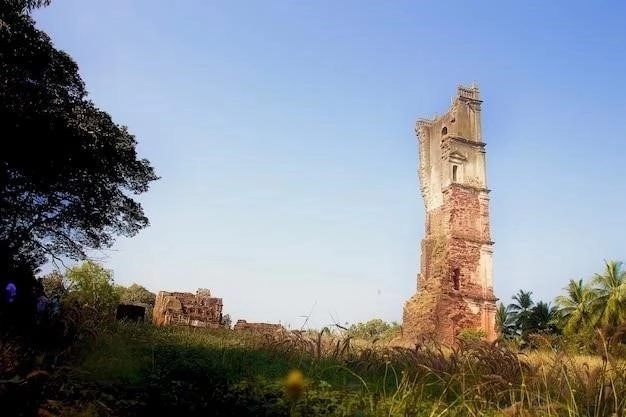
Preserving the Legacy: The Future of Bandra Fort
The Bandra Fort stands as a testament to Mumbais rich history and architectural heritage․ Recognizing its cultural and historical significance, efforts are underway to preserve the fort for generations to come․ The Brihanmumbai Municipal Corporation (BMC), in collaboration with heritage conservationists, has undertaken several initiatives to restore and maintain the forts structural integrity while enhancing its accessibility and appeal to visitors․ These initiatives include:
- Structural Restoration: Restoration work is being carried out on the forts ramparts, gateways, and other structures to repair damage caused by time, weather, and natural elements․ The use of traditional building materials and techniques is being emphasized to preserve the forts architectural authenticity․
- Improved Lighting: The fort is being illuminated with strategically placed lights to highlight its architectural features and enhance its beauty after nightfall․ This will not only make the fort more visually appealing but also create a safer environment for visitors after dark․
- Landscaping and Beautification: The forts surroundings are being landscaped and beautified with the planting of trees, shrubs, and flowering plants․ This will not only enhance the forts aesthetic appeal but also create a more pleasant and inviting environment for visitors․
- Accessibility Improvements: Efforts are underway to improve accessibility for visitors with disabilities․ This includes the construction of ramps, handrails, and other facilities to make the fort more accessible to everyone․
- Cultural Programs and Events: The BMC and other organizations are promoting the Bandra Fort as a venue for cultural programs and events․ This includes musical performances, plays, exhibitions, and other events that celebrate Mumbais rich cultural heritage․
These initiatives reflect a growing awareness of the importance of preserving Mumbais historical landmarks for future generations․ The Bandra Fort, with its rich history, architectural splendor, and breathtaking views, is a treasure that deserves to be cherished and protected․ By investing in its preservation and promoting its cultural significance, we can ensure that the Bandra Fort continues to inspire awe and wonder for many years to come․
Conclusion: A Timeless Treasure
The Bandra Fort is more than just a historical relic; it is a living testament to Mumbais enduring spirit, a place where the past seamlessly blends with the present․ Its weathered walls have witnessed centuries of change, from Portuguese and British rule to the birth of a modern metropolis․ Today, the fort stands as a tranquil oasis amidst the urban chaos, offering breathtaking views, a glimpse into history, and a space for cultural expression․
Whether you are drawn to its historical significance, its architectural beauty, or simply the promise of a peaceful escape, the Bandra Fort is a destination that promises a rewarding experience․ So, the next time you find yourself in Mumbai, take some time to explore this historical gem, and let its timeless charm transport you to another era․
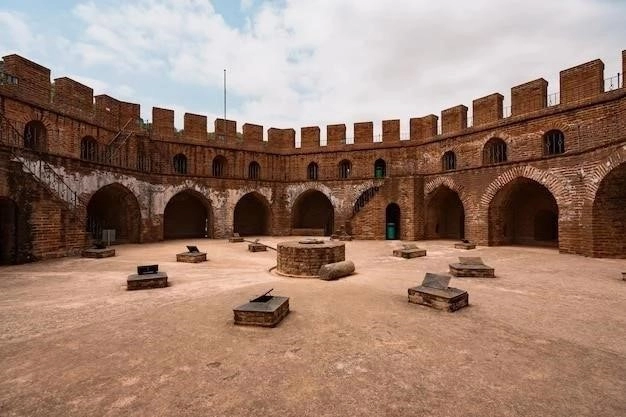
The Bandra Fort: A Deeper Dive into Heritage and Significance
Beyond its picturesque facade and breathtaking vistas, the Bandra Fort holds a depth of historical and cultural significance that warrants a closer examination․ Its story intertwines with the very fabric of Mumbais evolution, reflecting the ambitions of empires, the ebb and flow of power, and the enduring spirit of a resilient city․
A Strategic Foothold: Military Significance
Erected in 1640 by the Portuguese٫ the Bandra Fort٫ originally christened “Castella de Aguada” (Fort of the Water Point)٫ served as a strategic watchtower overlooking the Arabian Sea․ Its elevated position afforded panoramic views of the Mahim Bay and the surrounding islands٫ allowing the Portuguese to monitor maritime traffic and defend their territories against potential invaders․ The forts cannons٫ strategically positioned along its ramparts٫ stood as a formidable deterrent against any maritime threats․
A Shifting Landscape: Transfer of Power
The 18th century witnessed a dramatic shift in the balance of power in the region․ The rise of the Maratha Empire٫ led by the legendary Chhatrapati Shivaji Maharaj٫ challenged Portuguese dominance․ While the Marathas successfully captured most of the surrounding territories٫ the Bandra Fort remained under Portuguese control until 1739 when it fell to the Marathas․ This marked a turning point in the forts history٫ signaling the decline of Portuguese influence in the region․
The British Era and Beyond: A New Chapter
The arrival of the British in the 18th century ushered in a new era for the Bandra Fort․ While the British recognized its strategic importance٫ they did not utilize it extensively for military purposes․ Instead٫ the forts maintenance was gradually neglected٫ and it slowly fell into disrepair․ Despite its diminished military role٫ the fort remained a prominent landmark٫ bearing silent witness to the citys transformation under British rule․
Preservation and Renewal: A Collective Responsibility
In recent decades, there has been a growing recognition of the Bandra Forts historical and cultural significance․ Efforts to preserve and revitalize this heritage site have gained momentum, with government agencies, conservationists, and local communities joining forces to ensure its legacy endures․ The ongoing restoration work, aimed at preserving its structural integrity while enhancing its accessibility, reflects a commitment to safeguarding Mumbais rich heritage for generations to come․
The Bandra Fort: A Deeper Dive into Heritage and Significance (Continued)
From Fortification to Cultural Icon: A Transformation Unfolds
As Mumbai shed its colonial skin and embraced its identity as a burgeoning metropolis, the Bandra Fort underwent a fascinating metamorphosis․ No longer a bastion of military might, it transitioned into a cherished public space, a cultural icon woven into the citys social fabric․
A Canvas for Creativity: The Arts Find a Home
The forts amphitheater, with its sweeping views of the Arabian Sea, became a natural stage for artistic expression․ Music festivals, theatrical performances, and cultural events found a home within its historic walls, infusing the ancient structure with a vibrant, contemporary energy․ This fusion of history and art breathed new life into the fort, drawing locals and tourists alike to experience its unique ambiance․
A Place for Contemplation: Finding Solace in Historys Embrace
Beyond the cultural vibrancy, the Bandra Fort offers a sanctuary for reflection and introspection․ The gentle sea breeze, the rhythmic crashing of waves against the shore, and the panoramic vistas create an atmosphere of tranquility that is both soothing and inspiring․ Visitors often find themselves drawn to the forts secluded corners, seeking solace amidst the hustle and bustle of city life․
A Photographers Paradise: Capturing Beauty from Every Angle
The Bandra Forts architectural grandeur, its interplay of light and shadow, and its stunning natural backdrop have made it a favorite haunt for photographers․ From seasoned professionals to enthusiastic amateurs, photographers are captivated by the forts ability to frame the citys beauty in endlessly fascinating ways․ Whether capturing the suns golden glow at sunset or the dramatic interplay of clouds and sky, the Bandra Fort offers a wealth of photographic opportunities․
A Shared Responsibility: Safeguarding a Legacy
Preserving the Bandra Fort for future generations requires a concerted effort from all stakeholders․ Government agencies, heritage conservationists, local communities, and visitors all have a role to play in ensuring that this historical treasure continues to inspire and captivate․ By promoting responsible tourism, supporting conservation efforts, and fostering a deep appreciation for the forts significance, we can ensure that the Bandra Fort remains a vibrant symbol of Mumbais rich heritage for centuries to come․
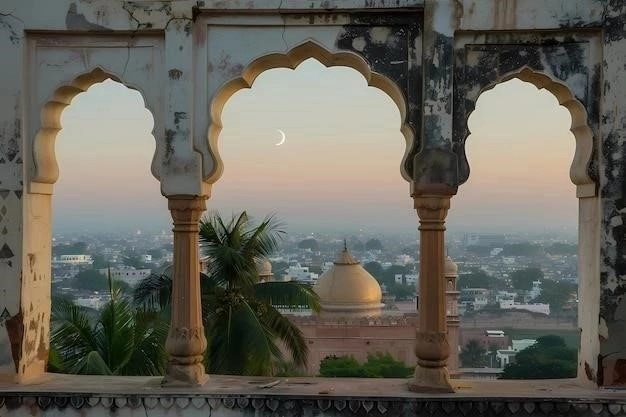
The Bandra Fort: A Legacy Embraced by Modernity
The narrative of Bandra Fort extends beyond its historical significance; it is a testament to the adaptive reuse of heritage structures in a bustling urban environment․ Today, the fort seamlessly integrates into the fabric of Mumbai, serving as a vibrant public space and a cultural hub that draws both local communities and global visitors․
A Community Gathering Place: Fostering Social Cohesion
The sprawling grounds surrounding the fort have been transformed into landscaped gardens, providing a welcome respite from the citys frenetic pace․ These green spaces have become a focal point for community gatherings, attracting families, couples, and individuals seeking solace amidst nature․ The laughter of children playing, the animated conversations amongst friends, and the quiet contemplation of individuals reading under the shade of trees create a harmonious blend of human interaction and natural serenity․
A Stage for Cultural Expression: Celebrating Diversity Through the Arts
Bandra Forts amphitheater, with its breathtaking backdrop of the Arabian Sea, has become a sought-after venue for cultural events․ From live music performances spanning diverse genres to theatrical productions that showcase local talent, the fort echoes with the vibrancy of Mumbais artistic spirit․ These events not only provide entertainment but also foster a sense of community, bringing people together to celebrate the citys rich cultural tapestry․
A Beacon for Sustainable Tourism: Preserving Heritage for Future Generations
Recognizing the importance of sustainable tourism practices, authorities have implemented measures to protect the forts ecological integrity․ Efforts to minimize the environmental impact of visitor footfall, promote responsible waste management, and raise awareness about heritage conservation are integral to ensuring that Bandra Fort continues to enchant visitors for generations to come․
An Ongoing Dialogue Between Past and Present: Shaping the Future
The story of Bandra Fort is a testament to the dynamic relationship between heritage and modernity․ As Mumbai evolves into a global city, the fort stands as a reminder of its layered past, a tangible link to its colonial history and its pre-colonial roots․ Its transformation from a strategic fortification to a vibrant cultural hub reflects the citys ability to adapt, innovate, and breathe new life into its heritage, ensuring that these historical treasures continue to inspire and enrich the lives of its citizens․
The Enduring Allure of Bandra Fort: A Tapestry of History, Culture, and Community
The Bandra Fort stands as a testament to Mumbais multifaceted heritage, seamlessly blending its Portuguese colonial past with its vibrant present․ More than just a historical relic, the fort has evolved into a dynamic public space that embodies the spirit of this cosmopolitan city․
A Microcosm of Mumbais Evolving Identity
Bandra Forts story mirrors the larger narrative of Mumbais transformation from a collection of islands into a bustling metropolis․ The forts strategic importance may have diminished over time, but its symbolic significance has only grown stronger․ It serves as a visual reminder of the citys layered history, a tangible link to its colonial past and the pre-colonial era that preceded it․
An Architectural Marvel: Blending Form and Function
The forts architecture reflects a fusion of European military design and local building techniques․ Its sturdy ramparts, strategically placed cannons, and commanding views of the Arabian Sea speak to its former defensive role․ Yet, the forts design also incorporates elements of local aesthetics, evident in the use of laterite stone and the integration of natural features into its structure; This blend of influences creates a unique architectural vocabulary that is both imposing and elegant․
A Haven for Artistic Expression and Cultural Exchange
Today, Bandra Fort serves as a vibrant platform for artistic expression and cultural exchange․ Its amphitheater, with its stunning backdrop of the sea, hosts a diverse range of events, from classical music concerts and traditional dance performances to contemporary theater productions and film screenings․ This eclectic mix of programming reflects Mumbais reputation as a melting pot of cultures, where tradition and modernity coexist in a harmonious balance․
A Symbol of Resilience and Renewal
Bandra Fort has weathered numerous storms, both literal and metaphorical, throughout its history․ It has endured periods of neglect, the ravages of time, and the relentless pressures of urbanization․ Yet, it has emerged from these challenges with a renewed sense of purpose, a testament to the enduring power of heritage to inspire and unite․ The forts ongoing restoration and conservation efforts reflect a collective commitment to safeguarding Mumbais cultural legacy for generations to come․
A Place for Reflection and Inspiration
As the sun sets over the Arabian Sea, casting a golden glow on Bandra Forts weathered walls, visitors and locals alike are drawn to its serene ambiance․ The gentle sea breeze, the rhythmic crashing of waves, and the panoramic views create a sense of tranquility that is both restorative and inspiring․ Bandra Fort stands as a reminder that even in the midst of a bustling metropolis, moments of peace and reflection can be found, offering solace and a renewed appreciation for the beauty that surrounds us․
The Future of Bandra Fort: A Legacy Preserved
The Bandra Fort, with its rich history and cultural significance, stands at a pivotal point․ As Mumbai continues its rapid urbanization, it is essential to balance the preservation of this historical treasure with the needs of a modern metropolis․ Sustainable development strategies, community engagement, and a deep respect for the forts heritage will be paramount in ensuring its continued relevance and splendor for generations to come․
Balancing Preservation and Progress
Striking a harmonious balance between preservation and progress is crucial for the forts future․ This involves implementing sensitive restoration techniques that adhere to international conservation standards, ensuring that any interventions respect the forts original fabric and architectural integrity․ Furthermore, it is vital to manage visitor traffic effectively, mitigating potential damage caused by overuse while still allowing public access to this cherished landmark․
Harnessing Technology for Heritage Conservation
Technological advancements offer innovative solutions for heritage conservation; 3D laser scanning can create detailed digital replicas of the fort, enabling virtual tours and providing invaluable data for preservation efforts․ Augmented reality applications can enhance visitor experiences by overlaying historical information and imagery onto the physical environment, fostering a deeper understanding and appreciation of the forts significance․
Community Engagement: Guardians of Heritage
Local communities are the true custodians of cultural heritage; Involving residents in the forts management and preservation fosters a sense of ownership and responsibility․ Educational programs, workshops, and volunteer opportunities can empower communities to actively participate in safeguarding their heritage, ensuring that the fort remains a vibrant part of their cultural identity․
Promoting Sustainable Tourism Practices
Encouraging sustainable tourism practices is essential to minimize the environmental impact on the fort and its surroundings․ This includes promoting responsible waste management systems, reducing plastic usage, and encouraging visitors to adopt eco-friendly transportation options․ By implementing such measures, we can ensure that the fort remains a pristine destination for generations to come․
Bandra Fort: A Symbol of Mumbais Enduring Spirit
The Bandra Fort stands as a powerful symbol of Mumbais enduring spirit – a city where history and modernity converge, where diverse cultures coexist, and where the past continues to inspire the present․ By embracing a forward-thinking approach to preservation, community engagement, and sustainable tourism, we can ensure that the Bandra Fort continues to captivate and inspire generations to come, standing as a testament to the enduring legacy of Mumbais rich and storied past․
The Bandra Fort: A Framework for Sustainable Heritage Management
Moving forward, the Bandra Fort presents a unique opportunity to pioneer a model of sustainable heritage management․ This model should be multifaceted, encompassing not just physical preservation, but also community engagement, economic viability, and environmental responsibility․
Developing a Comprehensive Management Plan
A well-structured management plan is crucial for the long-term sustainability of the Bandra Fort․ This plan should involve a multidisciplinary approach, integrating expertise from historians, architects, archaeologists, urban planners, environmentalists, and local communities․ This collaborative effort will ensure that all perspectives are considered, leading to a holistic and effective management strategy․ Key components of this plan should include:
- Detailed Documentation and Condition Assessment: Employing advanced techniques like 3D laser scanning and photogrammetry to create a precise digital record of the forts current condition․ This will serve as a baseline for monitoring future changes and guiding restoration efforts․
- Risk Assessment and Disaster Management: Identifying potential threats to the fort, both natural and man-made, and developing comprehensive disaster preparedness and response plans․ This includes measures to mitigate risks from climate change, pollution, vandalism, and encroachments․
- Visitor Management and Interpretation: Implementing a visitor management system that balances accessibility with preservation․ This includes controlling visitor numbers, designing clear pathways, and providing informative signage and interpretive materials that enhance visitor experience while minimizing impact․
Integrating the Fort into the Urban Fabric
The Bandra Fort should not be viewed as an isolated entity but as an integral part of the larger urban fabric․ Integrating the fort into the surrounding neighborhood can enhance its relevance and sustainability․ Some strategies include:
- Creating Buffer Zones: Establishing buffer zones around the fort to restrict incompatible development and preserve its visual integrity․ These zones can be designed as green spaces, pedestrian walkways, or cultural hubs that complement the forts historical character․
- Enhancing Connectivity: Improving pedestrian and public transport connectivity to and from the fort, making it easily accessible to visitors while reducing vehicular traffic and pollution in its vicinity․
- Promoting Local Businesses: Encouraging local businesses to offer services and products that cater to visitors while respecting the forts heritage․ This could include promoting traditional crafts, local cuisine, and guided tours operated by residents․
Fostering a Culture of Heritage Stewardship
The long-term success of the Bandra Forts preservation hinges on fostering a sense of ownership and responsibility within the community․ This requires engaging residents, especially youth, in heritage conservation efforts․ Key initiatives include:
- Educational Programs: Developing educational programs for schools and colleges that highlight the forts history, architecture, and ecological significance․ This will instill a sense of pride and appreciation for local heritage among younger generations․
- Volunteer Programs: Establishing volunteer programs that allow residents to participate in conservation activities, such as cleaning, gardening, and monitoring the forts condition․ This hands-on involvement fosters a sense of ownership and responsibility․
- Community Events: Organizing cultural events, workshops, and exhibitions at the fort that celebrate local heritage, art, and traditions․ This will make the fort a vibrant community hub and reinforce its cultural significance․
Conclusion: A Sustainable Future for a Historic Landmark
The Bandra Fort stands as a beacon of Mumbais rich past, offering valuable insights into the citys evolution over centuries․ By adopting a comprehensive and sustainable approach to its management, we can ensure that this historic landmark continues to inspire and educate generations to come․ Through a harmonious blend of preservation, education, and community engagement, the Bandra Fort can serve as a model for sustainable heritage management not just in Mumbai, but across India and beyond․










